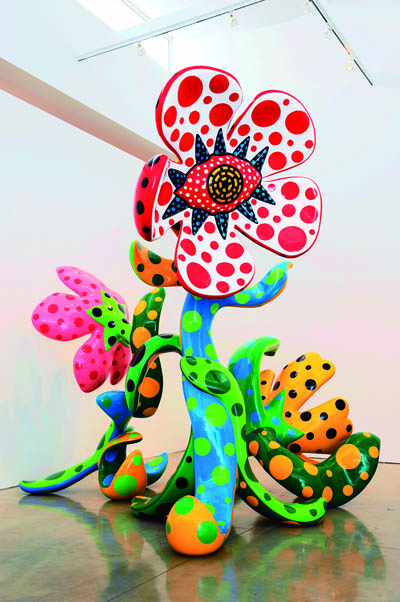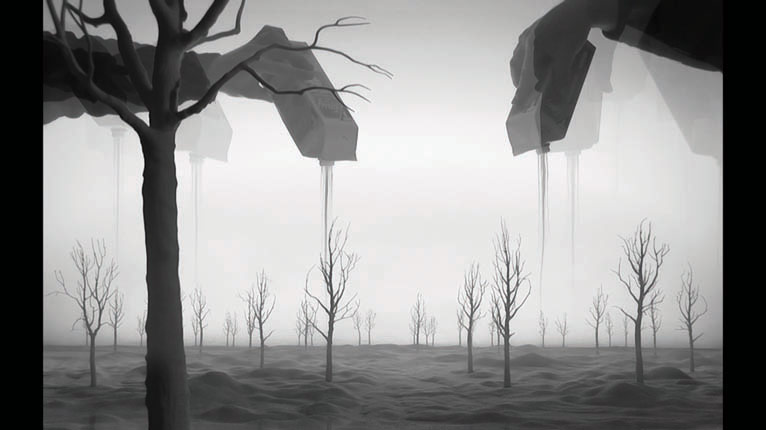FIRST AICHI TRIENNALE: ARTS AND CITIES
| October 1, 2010 | Post In LEAP 5

In its inaugural year, the Aichi Triennale takes its own unique place in a continuum of large-scale periodic exhibitions. More along the lines of an international arts festival than a traditional triennial, the exhibition aims to convey the latest trends in contemporary art to a Japanese public. Taking place in the Japanese city of Nagoya, capital of Aichi prefecture, the Aichi Triennale is expected to be held every three years as a means to introduce exhibition-goers to contemporary art from around the world. As a whole, the exhibition encompasses various forms of art; its presentations include visual art, film viewings, concerts, opera, ballet, and stage performances.
Over one hundred thirty artists and artist collectives from around the world were invited to participate in this year’s edition, whether selected for the exhibition’s “International Exhibition of Contemporary Art,” for the “Artists in the City” section, for the performing arts, opera and film programs, or through a competition juried by internationally recognized curators.
Thousands of visitors made their way to the host city of Nagoya for the Triennale’s opening ceremony on August 20th, the majority from neighboring countries. Despite the gaffe of failing to introduce the artists included in the exhibition with the notable exception of an on-stage Yayoi Kusama, the ceremony was well-orchestrated. In his statement, artistic director Akira Tatehata said that the event has three main aims, first among them “to cast light on what is currently happening in the art world and to communicate the lively energy of contemporary artists’ activities.” The second aim of the “epic project” is to produce a sense of exhilaration within the event and the city of Nagoya. “The third objective is to actively incorporate performing arts such as opera, dance, and music, with contemporary art as the core.” Tatehata emphasized that, “Rather than separating presentations by genres, we intend to emphasize as much correlation as possible to enable active interaction across boundaries between disciplines.”

In setting the event’s goals, Mr. Tatehata made a clear delineation between Aichi and other art events. Its fundamental festival-like nature thus becomes more blatant. The theme of this year’s Aichi Triennale was “Arts and Cities.” Accordingly, electric cars covered in polka dots, fashioned by Kusama in a gesture standard for the artist, are available for visitors to explore the art presentations on view in the city. The vehicles are set to take people through the different venues, which range from museums and theaters to public squares, parks, and a historic textile wholesale district. This approach creates a series of fascinating yet unusual urban scenes; as visitors are chauffeured around the city, they are surrounded and involved in powerful works of art. The entire city seems to have been turned into an art space, fulfilling the scenario set out by Tatehata.
However, the magic we would expect to be captivated by when strolling around the art sites was hampered by a lack of a strong leitmotif. Often casual and dispersive, the coherent organization of the events isn’t entirely clear. It’s possible that to have seen a single good show, attended an interesting performance, or to have entered Aichi Arts Center and been entranced by a weird green proboscis protruding from the ceiling (Shiro Matsui’s balloon) are all worthwhile experiences, yet may still leave visitors with an overall feeling of disconnect.

From another angle, the selection of artists in the international exhibition shows a diversity of works, some newly commissioned and others shown for the first time in Japan. Most names come from Asia, alongside a limited though well thought-out selection from Europe, the Americas, and Africa. Should a triennial provide evidence for a movement from the local to the global, or should it simply strive for balance in geographical provenance? We wonder.
Regarding the singular exhibitions, when visiting the “International Exhibition of Contemporary Art,” centered around the Aichi Arts Center, Nagoya City Art Museum, Choja-machi and Nayabashi sites, as well as other locations on city streets, Belgian artist Han Op De Beeck stood out from the artist crowd. His remarkable video Staging Silence enchanted the spectator’s eyes with its rhythm, poetry, beauty and perfection of composition. Italian artist Tatiana Trouvé’s installation in which she skillfully places lines and objects made of metal on floors, ceilings and walls, creating spaces that challenge the perception of the boundaries, is attractive as well. Malaysian artist Tsai Ming Liang, a resident of Taiwan, presents a compelling video installation loaded with a subtle sentimental quality. The spectators are invited to sit as if in a theatre. Here they enter the same dimension and space as the scene portrayed in the video. The work openly questions the relationship between the film (image) and its audience, and Tsai Ming Liang without a doubt succeeds in showing it.
Refreshingly innovative is the Triennale’s section dedicated to commissioned projects, whose successful proposals were selected under a respectful jury, among jurors Mori Art Museum’s chief curator Mami Kataoka. These unique exhibits give multifaceted new perspectives and showcase a type of work not often viewed at other international exhibitions. Chinese artist Sun Xun’s video animation and site-specific project “Beyond-ism” is commendable for its formidable composition and presentation: ten rice-paper scrolls, each five meters long, present ink drawings telling legendary stories about China, depicting Chinese perception of the world and its relation to Japan. Installed together with a video animation, they accompany a site-specific drawing completed in the exhibition space of Aichi Art Center.
Overall, the Aichi Triennale has created a platform for international discussion on different trends, a place where people from disparate backgrounds can meet and mingle. The piece realized by the collective Xijing Men, the artist trio formed in 2007 by Tsuyoshi Ozawa (Japan), Chen Shaoxiong (China), and Gimhongsok (South Korea), unveils their Chapter 2: Here is Xijing / The Journey to the West. This ongoing project, which has seen four chapter entries so far, underlines the international flavor of the entire event while adding a distinctive note of humor and irony. Whether designated “Triennale” or “International Art Fair,” Aichi’s event has started an ongoing interdisciplinary and international conversation. Maria Caminade

